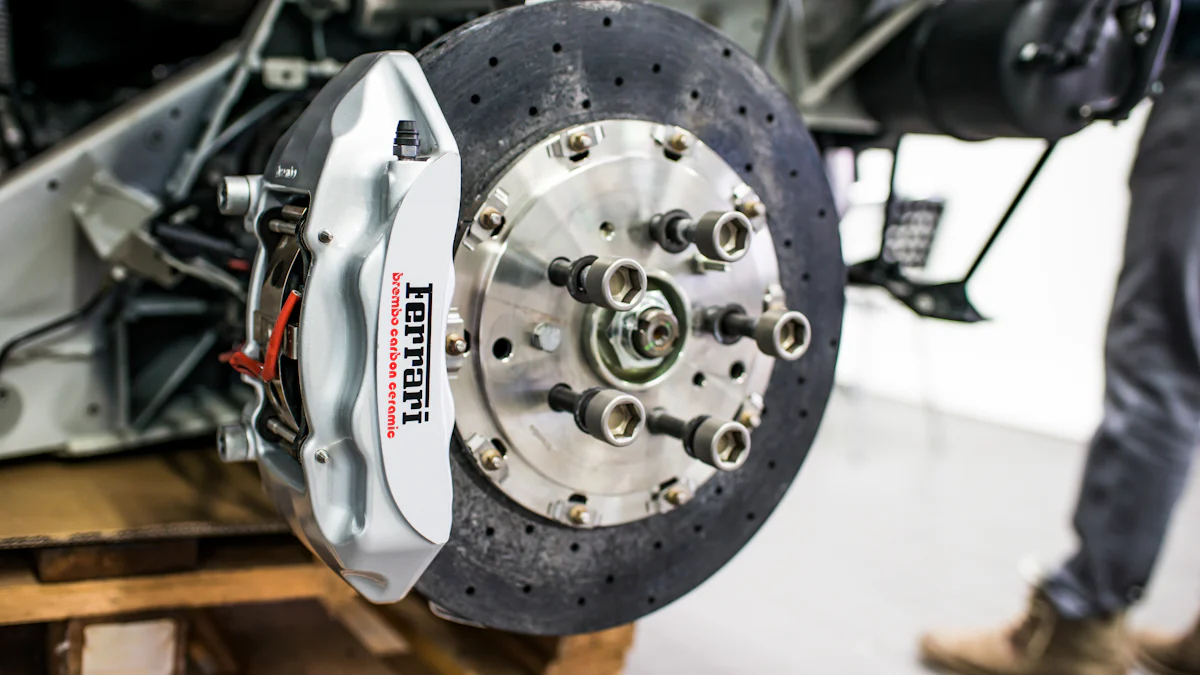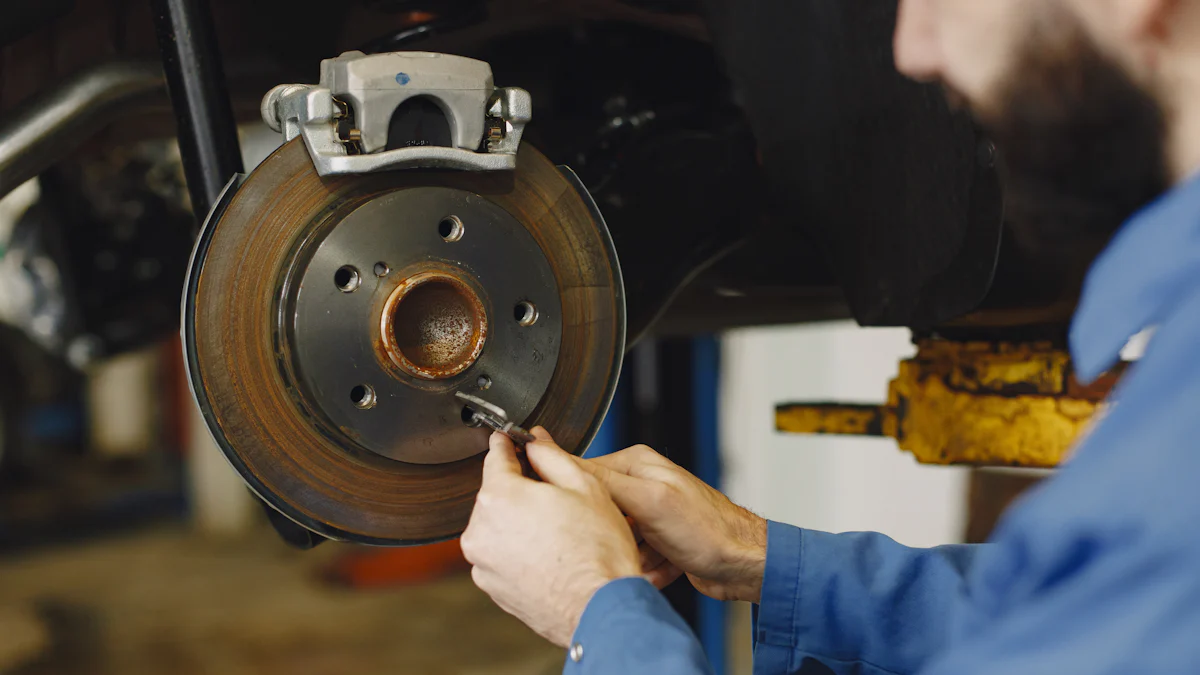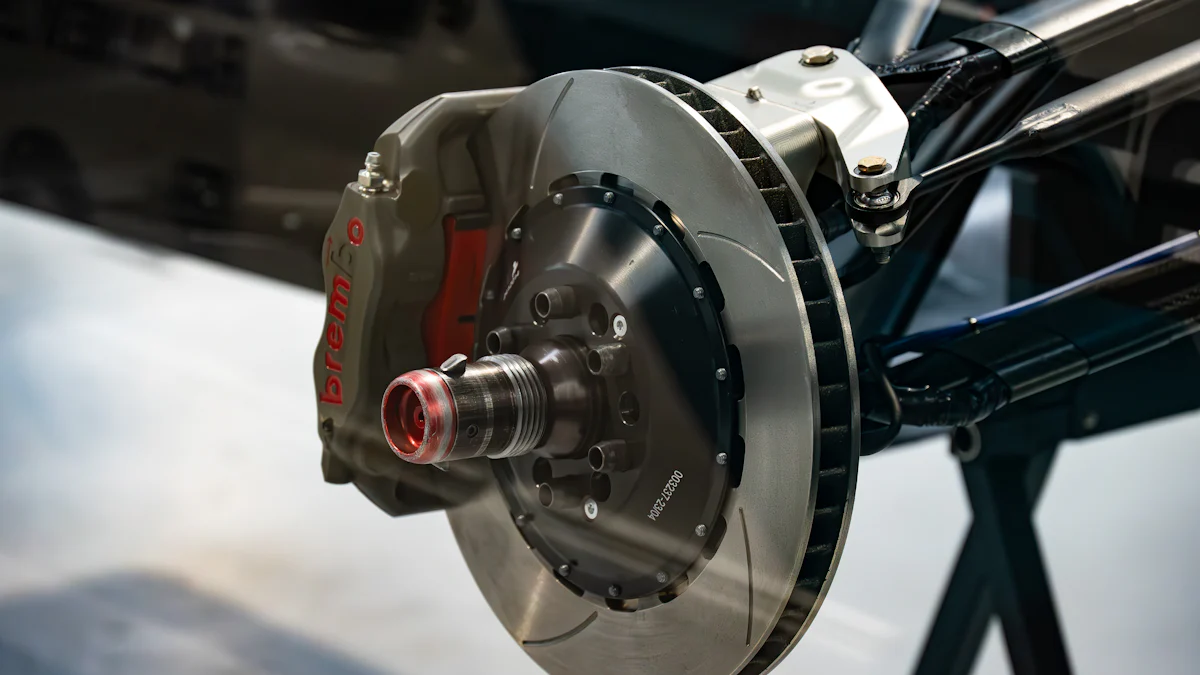
Your vehicle’s safety depends on many factors, and one of the most critical is its braking system. Choosing the right brake caliper repair kits ensures your brakes work efficiently and reliably. A poor choice can lead to performance issues or even accidents. Don’t compromise—pick a kit that fits your needs perfectly.
Key Takeaways
- Always ensure compatibility with your vehicle’s make, model, and year before purchasing a brake caliper repair kit to avoid performance issues.
- Invest in high-quality materials for your repair kit; durable components can save you money in the long run by reducing the need for frequent repairs.
- Read customer reviews and check for warranties to make informed decisions; this can protect you from poor-quality kits and enhance your purchasing confidence.
Understanding Brake Caliper Repair Kits

What Are Brake Caliper Repair Kits?
Brake caliper repair kits are essential tools for fixing or maintaining your vehicle’s brake calipers. These kits typically include components like seals, boots, and O-rings that help restore the caliper’s functionality. Over time, the parts inside a brake caliper can wear out due to heat, moisture, or general use. Instead of replacing the entire caliper, you can use a repair kit to replace just the damaged parts. This saves you money and keeps your brakes working smoothly.
Think of it like giving your brake calipers a tune-up. The kit provides everything you need to fix leaks, improve performance, and extend the life of your braking system. Whether you’re a DIY enthusiast or someone who prefers to leave repairs to a mechanic, these kits are a practical solution.
Why Are Brake Caliper Repair Kits Important?
Your brakes are one of the most critical safety features on your car. If your brake calipers aren’t functioning properly, your vehicle’s stopping power can be compromised. This puts you and others on the road at risk. Brake caliper repair kits help you address these issues before they become major problems.
By using a repair kit, you can fix common issues like sticking calipers or fluid leaks. This ensures your brakes respond quickly and effectively when you need them most. Plus, regular maintenance with these kits can prevent costly repairs down the line. It’s a small investment that pays off in both safety and savings.
Key Factors to Consider When Choosing Brake Caliper Repair Kits
Ensuring Compatibility with Your Vehicle
The first thing you need to check is whether the repair kit matches your vehicle. Not all brake caliper repair kits fit every car. Look at your car’s make, model, and year. These details are usually in your owner’s manual or on the manufacturer’s website. Using an incompatible kit can lead to poor performance or even damage your braking system. Always double-check before buying.
Evaluating Quality and Durability
You want a kit that lasts. High-quality materials like rubber seals and stainless steel components can handle heat and wear better. Cheap kits might save you money upfront, but they often fail faster. Look for kits that meet or exceed OEM (Original Equipment Manufacturer) standards. This ensures they’ll perform well under tough conditions.
Considering Brand Reputation
Some brands are known for their reliability. Others, not so much. Stick with trusted names in the automotive industry. Brands with good reputations often provide better customer support and warranties. If you’re unsure, ask around or check online reviews. A well-known brand can give you peace of mind.
Balancing Cost and Value
Price matters, but it shouldn’t be the only factor. A low-cost kit might seem like a bargain, but it could cost you more in the long run if it fails quickly. On the other hand, the most expensive kit isn’t always the best. Compare features, materials, and reviews to find a kit that offers the best value for your money.
Checking Included Components
Not all kits are created equal. Some include everything you need, while others might leave out key parts. Check the product description carefully. A complete kit should include seals, boots, O-rings, and any other necessary components. Missing parts can delay your repair and add extra costs.
Tip: Keep a checklist of what you need before buying. This helps you avoid surprises when you open the box.
How to Identify the Right Brake Caliper Repair Kits for Your Vehicle

Reviewing Your Vehicle’s Specifications
Start by gathering your car’s essential details. You’ll need to know the make, model, year, and trim level. These specifications are usually listed in your owner’s manual or on a sticker inside the driver’s door. Why does this matter? Brake systems vary between vehicles, even within the same brand. Using the wrong kit can lead to poor performance or even damage. Take a few minutes to double-check these details before you shop.
Matching the Kit to Your Car’s Make and Model
Once you have your vehicle’s specs, look for a kit designed specifically for your car. Many manufacturers label their brake caliper repair kits with the compatible makes and models. If you’re shopping online, use filters to narrow down your options. In-store, ask a sales associate for help. A perfect match ensures the components fit properly and work as intended. Don’t guess—getting this step right is crucial for your safety.
Consulting a Professional or Vehicle Manual
Still unsure? Don’t hesitate to ask for help. A trusted mechanic can recommend the right kit for your car. If you prefer to handle it yourself, your vehicle’s service manual is a goldmine of information. It often lists part numbers or specifications for compatible kits. Taking the time to consult an expert or manual can save you from costly mistakes.
Pro Tip: Keep your vehicle’s VIN (Vehicle Identification Number) handy. It’s a quick way to confirm compatibility when buying parts.
Tips for Buying Brake Caliper Repair Kits
Deciding Between Online and In-Store Purchases
When it comes to buying brake caliper repair kits, you’ve got two main options: online or in-store. Each has its perks. Shopping online gives you access to a wider selection. You can compare prices, read reviews, and even find hard-to-get kits. Plus, it’s super convenient—you can shop anytime without leaving your house.
On the other hand, in-store shopping lets you see the product before buying. You can ask questions and get advice from sales staff. If you’re unsure about compatibility, this can be a lifesaver. Think about what works best for you. If you need the kit quickly or want expert guidance, head to a store. For more variety and deals, go online.
Reading Customer Reviews and Ratings
Customer reviews are like a sneak peek into what you’re buying. Before you hit “add to cart,” take a few minutes to check what others are saying. Look for reviews that mention durability, ease of use, and compatibility. Pay attention to patterns. If multiple people complain about missing parts or poor quality, it’s a red flag.
Ratings can also help you narrow down your choices. A product with hundreds of positive reviews is usually a safer bet than one with just a handful. Don’t skip this step—it can save you from wasting money on a bad kit.
Verifying Warranties and Guarantees
A good warranty shows the manufacturer stands behind their product. Before buying, check if the kit comes with a warranty or guarantee. This can protect you if something goes wrong. For example, if a seal fails after installation, a warranty might cover a replacement.
Some brands even offer satisfaction guarantees. This means you can return the kit if it doesn’t meet your expectations. Always read the fine print. Knowing you’re covered adds peace of mind to your purchase.
Tip: Keep your receipt or order confirmation. You’ll need it if you ever have to claim a warranty.
Common Mistakes to Avoid When Buying Brake Caliper Repair Kits
Purchasing Incompatible Kits
One of the biggest mistakes you can make is buying a kit that doesn’t fit your vehicle. It’s easy to assume that all brake caliper repair kits are universal, but they’re not. Each kit is designed for specific makes and models. Using the wrong one can lead to poor performance or even damage your braking system.
To avoid this, always double-check your car’s make, model, and year before purchasing. If you’re shopping online, use filters to narrow down compatible options. In-store, ask a sales associate for guidance. Don’t skip this step—it’s crucial for your safety and your wallet.
Tip: Keep your vehicle’s VIN handy. It’s a quick way to confirm compatibility when buying parts.
Prioritizing Low Cost Over Quality
Saving money feels great, but choosing the cheapest kit isn’t always the smartest move. Low-cost kits often use inferior materials that wear out quickly. This can lead to more frequent repairs and higher costs in the long run.
Instead, focus on value. Look for kits made with durable materials like high-quality rubber or stainless steel. Check reviews to see how well the kit holds up over time. Spending a little more upfront can save you from headaches later.
Reminder: A good deal isn’t just about price—it’s about getting a product that lasts.
Overlooking the Importance of Included Components
Not all kits come with everything you need. Some might leave out essential parts like seals or O-rings. If you don’t notice this before buying, you could end up delaying your repair or spending extra money on missing components.
Always read the product description carefully. Make sure the kit includes all the necessary parts for your repair. A complete kit saves you time and ensures a smoother installation process.
Pro Tip: Create a checklist of required components before shopping. This helps you avoid surprises when you open the box.
Choosing the right brake caliper repair kit keeps your car safe and performing at its best. Focus on these essentials:
- Compatibility with your vehicle
- Quality materials for durability
- Value for your money
Take your time to research. Compare options, read reviews, and make a choice you can trust.
Post time: Jan-03-2025

